MRE
MRE - Ministry of Foreign Affairs
Since January 2021, there has been an upward trend in the issuance of visas by Brazilian consular posts. The number of visas issued has increased from 3.8 thousand in January 2021 to 9.2 thousand in January 2023, as illustrated in Graph 1.
It is worth noting that during the months under analysis, all visas issued to Afghan citizens were granted outside of Afghanistan. Furthermore, there was a decrease in the issuance of visas for both Afghan and Ukrainian nationals. Conversely, Angolans, Chinese, and Indians remained the prominent nationalities in terms of visa issuance (Map 1).
In January, visitor and work visas remained the most frequently issued categories, while visas for study purposes and family reunification demonstrated relative significance (Graph 2).
GRAPH 1
Number of visas issued by consular offices - Brazil, 2021-2023
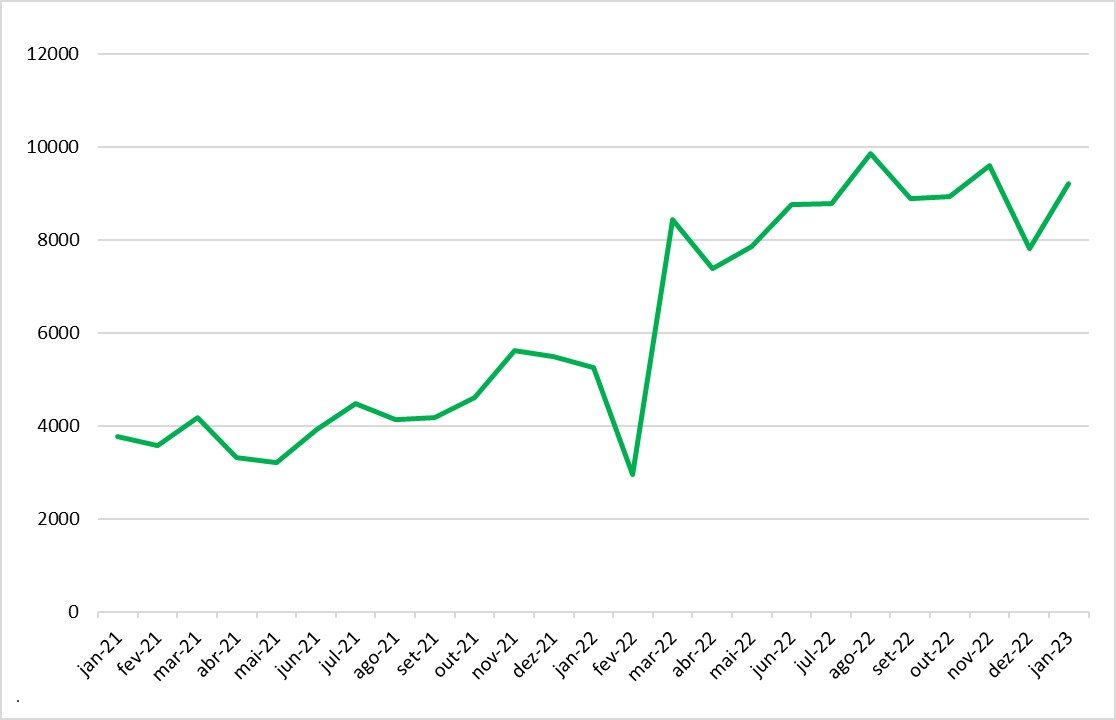
Source: OBMigra (2023), based on data from the Ministry of Foreign Affairs.
GRAPH 2
Number of visas granted, according to typologies - Brazil, January 2023.
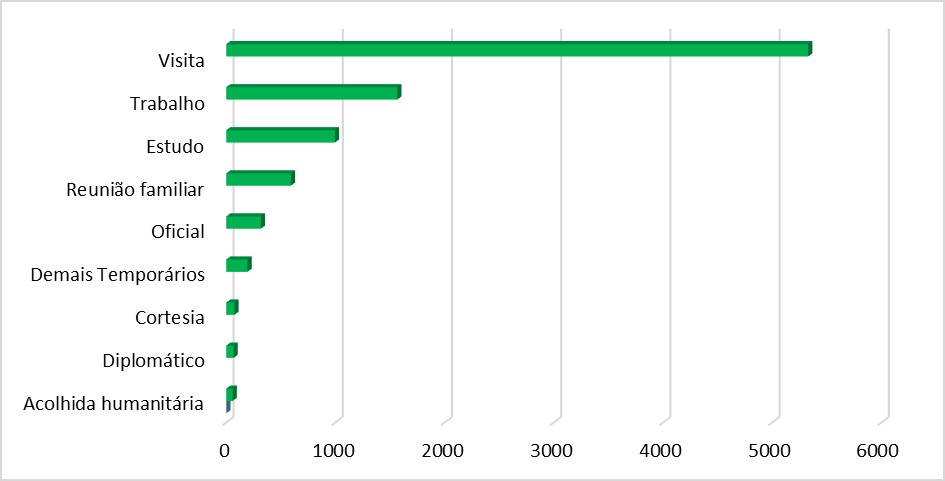
Source: OBMigra (January 2023), based on data from the Ministry of Foreign Affairs.
MAP 1
Number of visas granted by main nationalities - Brazil, January 2023.
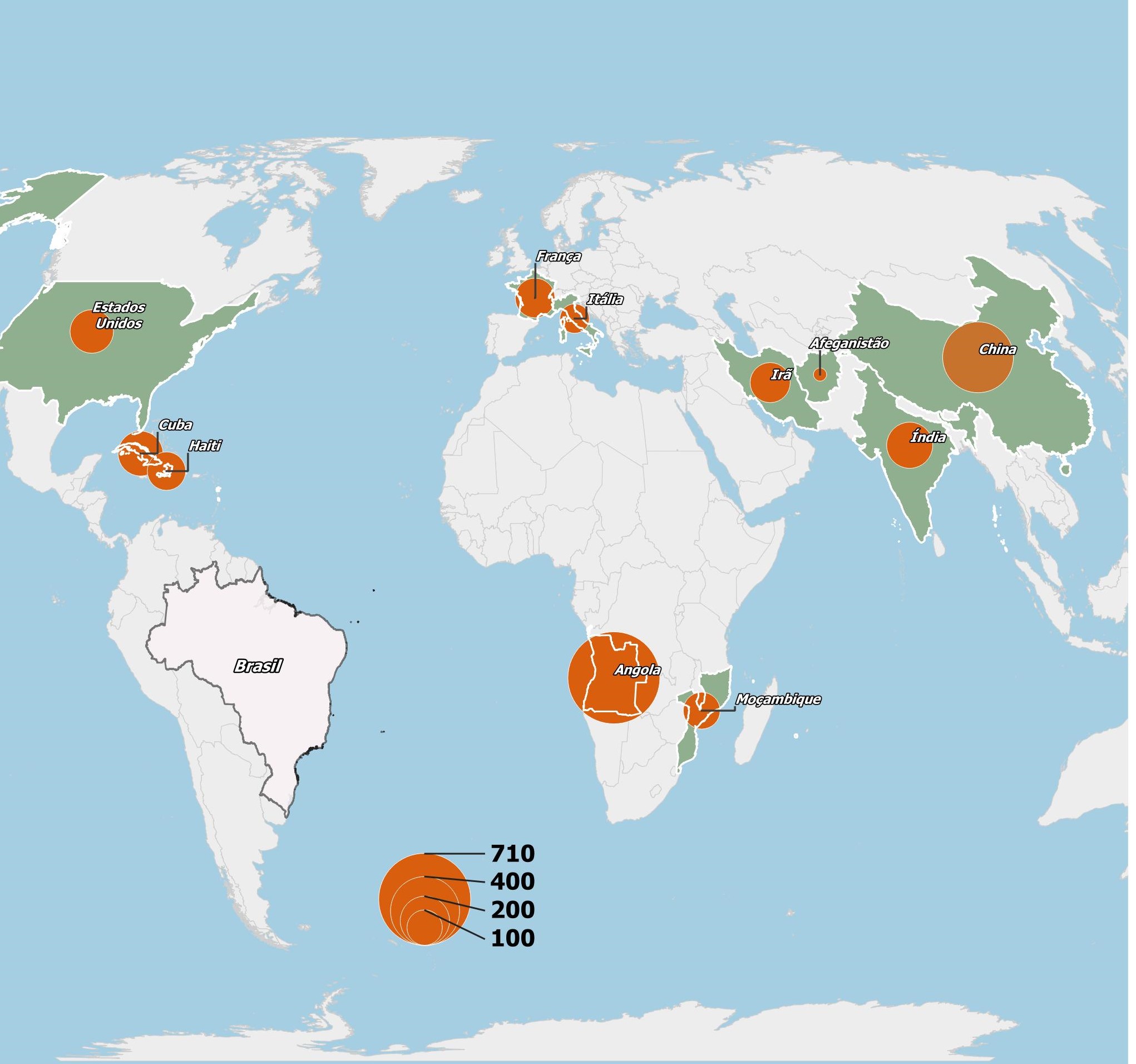
Source: OBMigra (January 2023), based on data from the Ministry of Foreign Affairs.
STI
STI (International Traffic System)
In the month of January, movements through border crossings reached levels comparable to those observed before the Covid-19 pandemic, with a total of 3.2 million movements. This figure is only surpassed by the numbers recorded in January 2019 and January 2020 (Graph 3).
Despite the positive overall balance in January, the number of Brazilian departures still exceeded the number of entries, although at a lower level compared to December (Graph 4).
GRAPH 3
Cross-border movements, by month of registration, Brazil 2019/2023
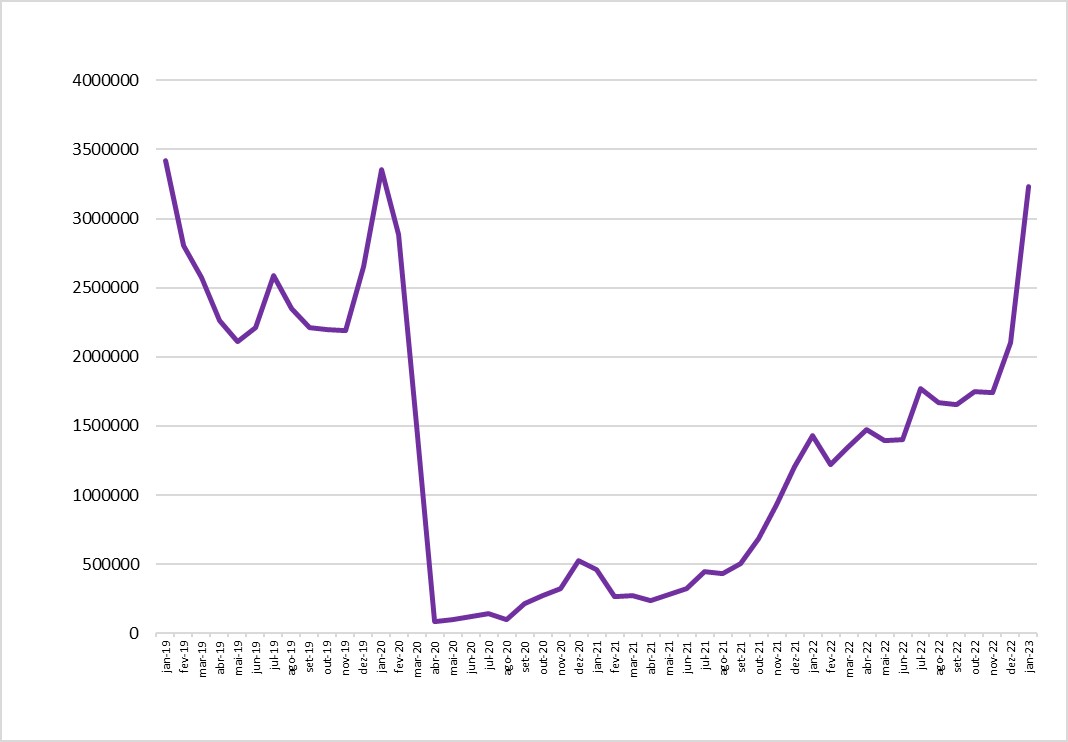
Source: OBMigra (2023), based on data from the Brazilian Federal Police, International Traffic System (STI).
GRAPH 4
Balance of cross-border movements of people, according to typology - Brazil, December 2022 and January 2023.
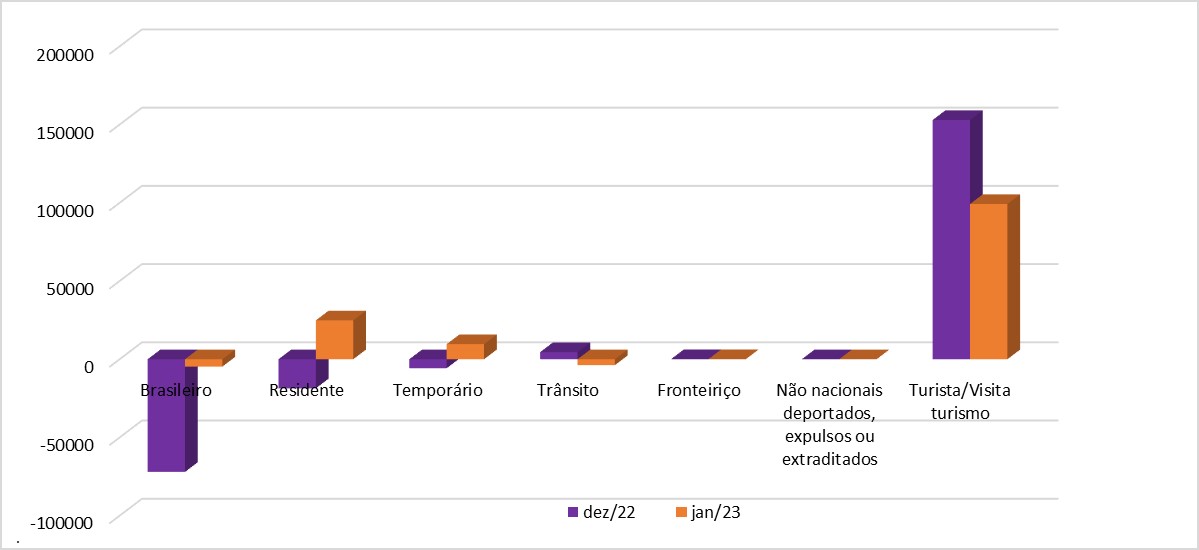
Source: OBMigra (January 2023), based on data from the Brazilian Federal Police, International Traffic System (STI).
SISMIGRA
SisMigra (National Migration Registry System)
Following a downward trend since August 2022, the number of residence registrations witnessed a notable increase of 9.9% compared to the month of December (Graph 5).
Although temporary registrations made a substantial contribution, the participation of residents and border residents was also significant in January (Graph 6).
It is worth highlighting the recovery in registrations of Venezuelans and Haitians, as they had been experiencing a decline for several months (Map 2).
GRAPH 5
Number of immigrant registrations, by month of registration - Brazil, 2019/2023
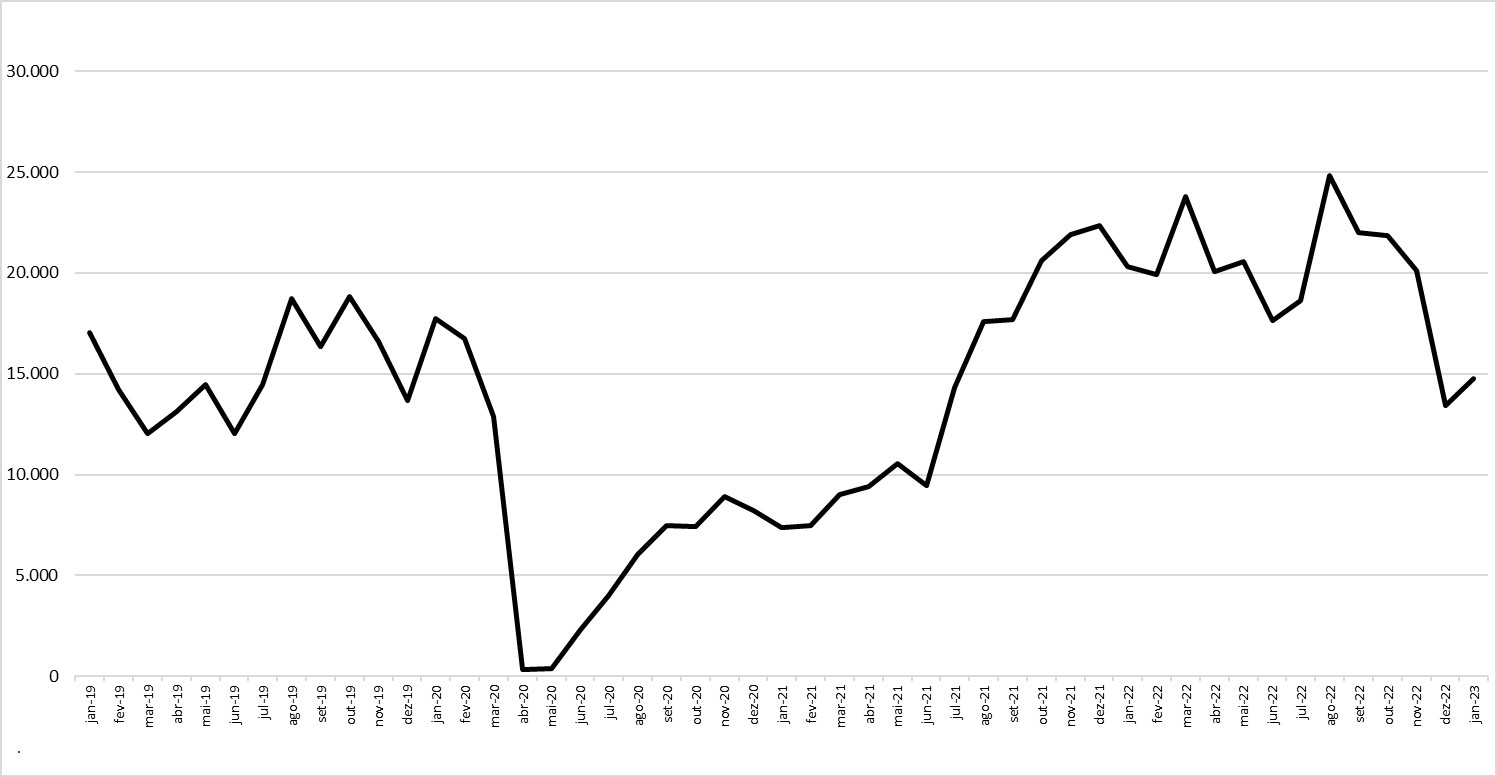
Source: OBMigra (2023), based on data from the Brazilian Federal Police, National Migration Registry System (SISMIGRA).
GRAPH 6
Number of migrant registrations, according to month of registration and classification - Brazil, December 2022 and January, 2023.

Source: OBMigra (January 2023), based on data from the Brazilian Federal Police, National Migration Registry System (SISMIGRA).
MAP 2
Number of immigrant registrations, by main countries of birth, January 2023.

Source: OBMigra (January 2023), based on data from the Brazilian Federal Police, National Migration Registry System (SISMIGRA).
Solicitantes
Applicants for refugee status recognition
The volume of applications for recognition of refugee status has remained relatively stable, with minor fluctuations, since October 2022 (Graph 7).
Pacaraima and Boa Vista, both located in the state of Roraima, were the cities that received the highest number of applications for recognition of refugee status (Graph 8).
Among the applicants, Venezuelans and Cubans represented the nationalities with the highest participation (Map 3).
GRAPH 7
Number of applications for recognition of refugee status, by month of registration - Brazil, 2019-2023
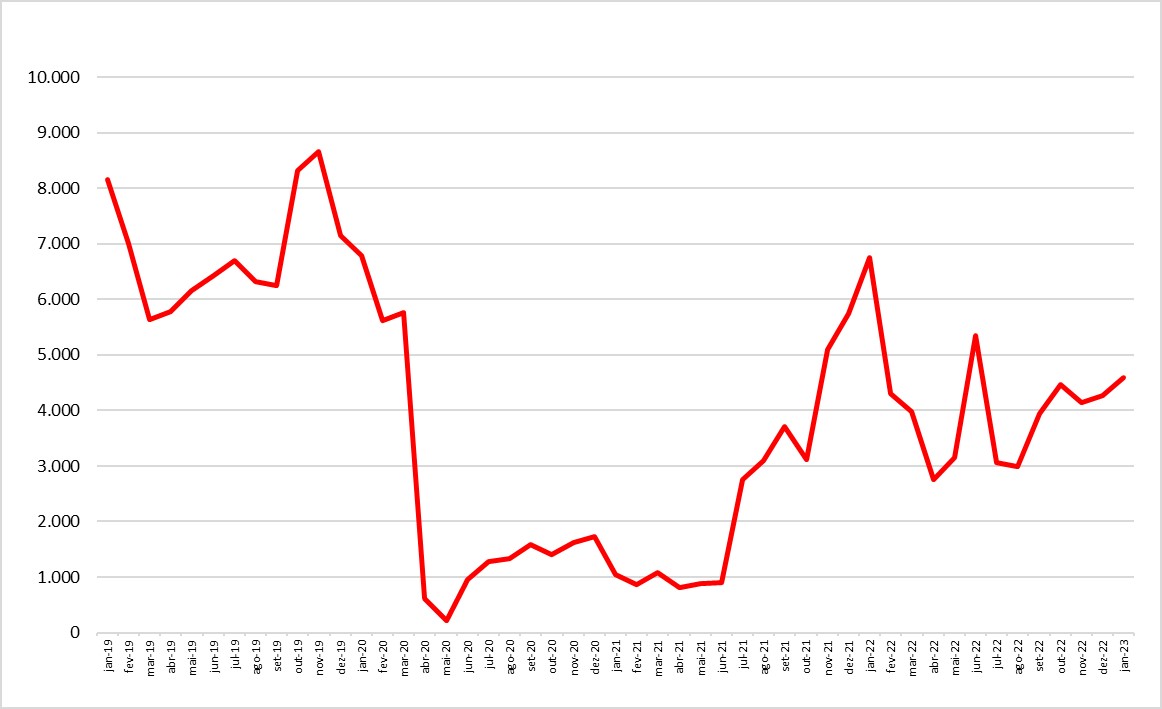
Source: OBMigra (2023), based on data from the Brazilian Federal Police, Asylum Claims, and the System of the National Committee for Refugees (SISCONARE).
GRAPH 8
Number of applications for recognition of refugee status, by main municipalities - Brazil, January 2023.
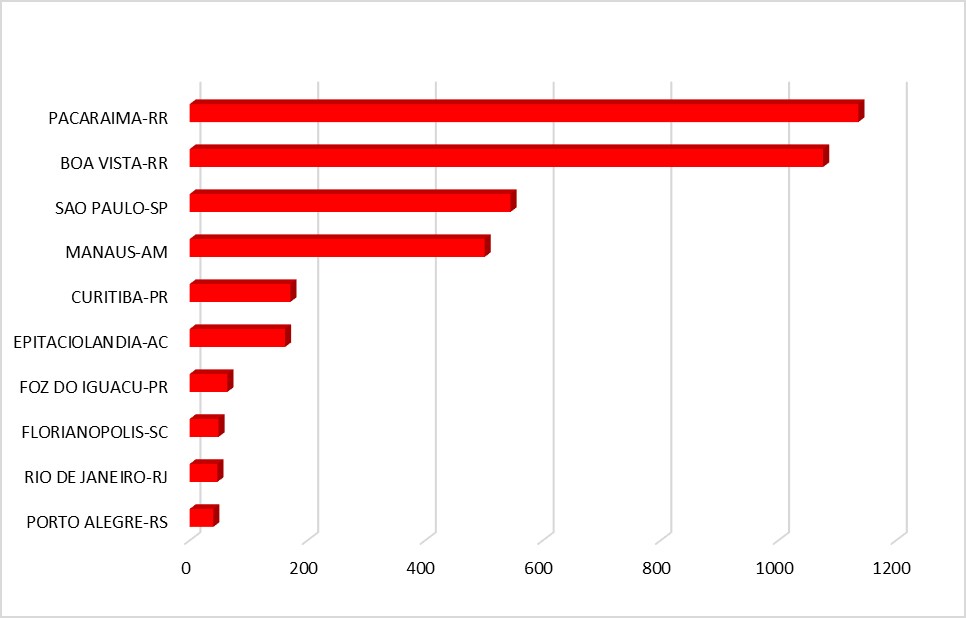
Source: OBMigra (January 2023), based on data from the Brazilian Federal Police, Asylum Claims.
MAP 3
Number of applications for recognition of refugee status, according to main countries, January 2023.
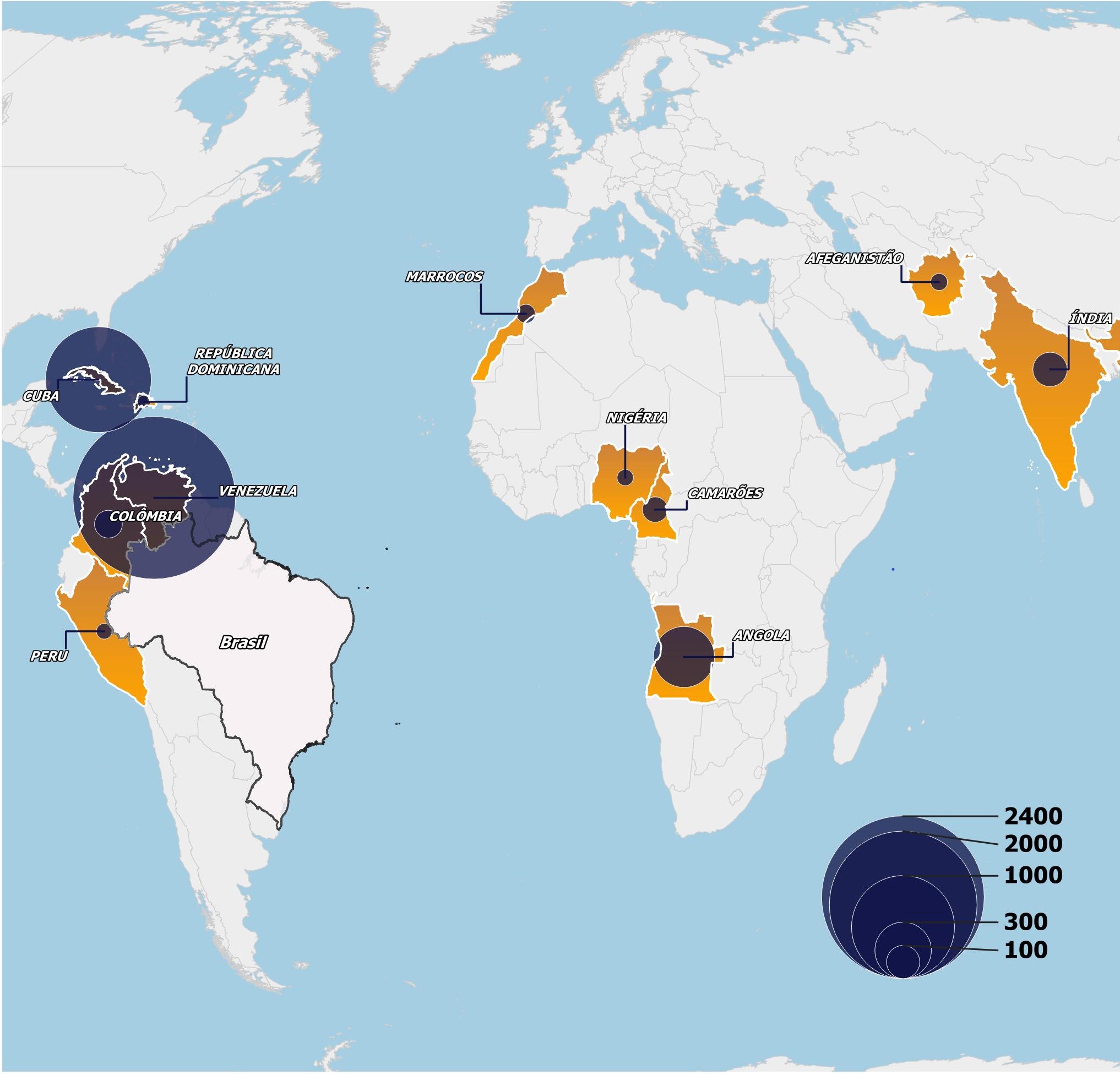
Source: OBMigra (January 2023), based on data from the Brazilian Federal Police, Asylum Claims.
CGIL
CGIL (General Coordination of Labor Immigration)
Since October 2022, work permits for labor and investment purposes have been following a downward trend, with October being an exceptional month in the annual historical series. In January, there seems to be a return to stability, with authorization levels averaging around two thousand per month (Graph 9).
Despite their relatively small values, Normative Resolution (RN) 45 (digital nomad) and RN 36 (real estate investor) experienced a positive variation compared to December, amidst the overall reduction in the number of authorizations (Graph 10).
Furthermore, in line with the general trend of declining authorizations, there was also a decrease in the volume of grants for skilled workers in January (Graph 11).
GRÁFICO 9
Number of work permits for labor and investment purposes, by month of registration - Brazil, 2019-2023
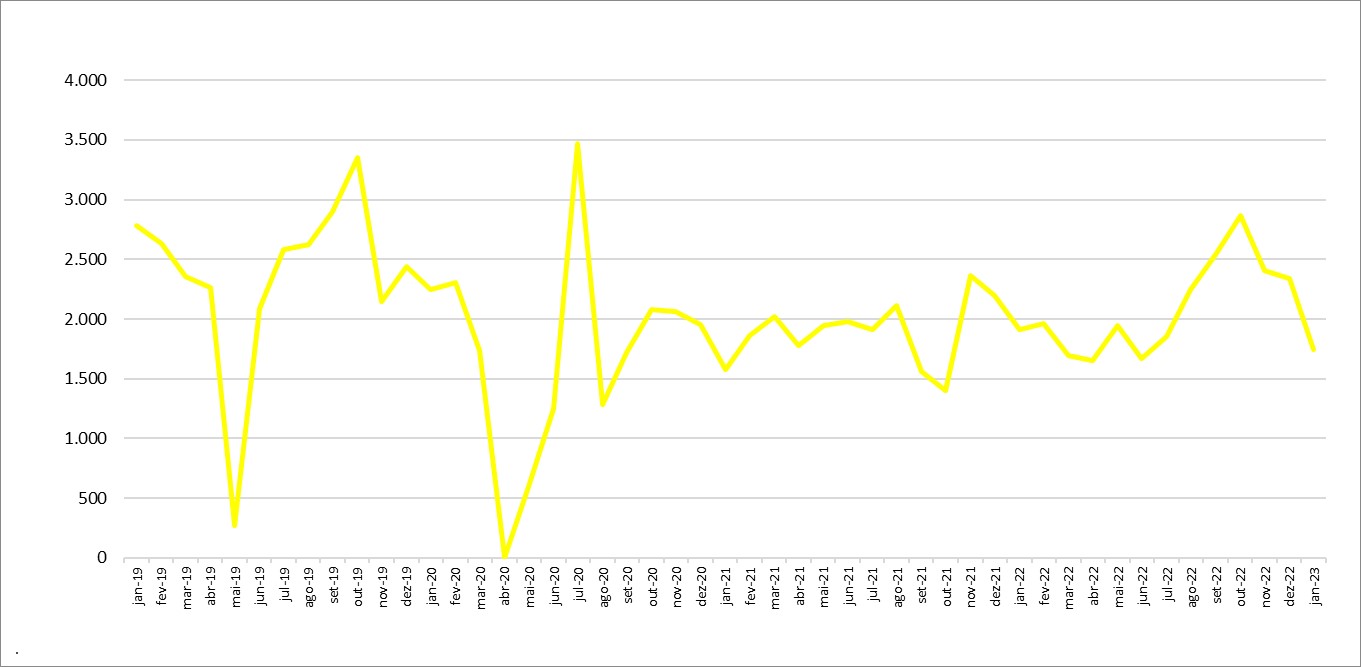
Source: OBMigra (2023), based on data from the General Coordination of Labor Immigration (CGIL).
GRAPH 10
Number of permits granted, by month, according to RNS 45 and 36 - Brazil, December 2022 and January 2023.
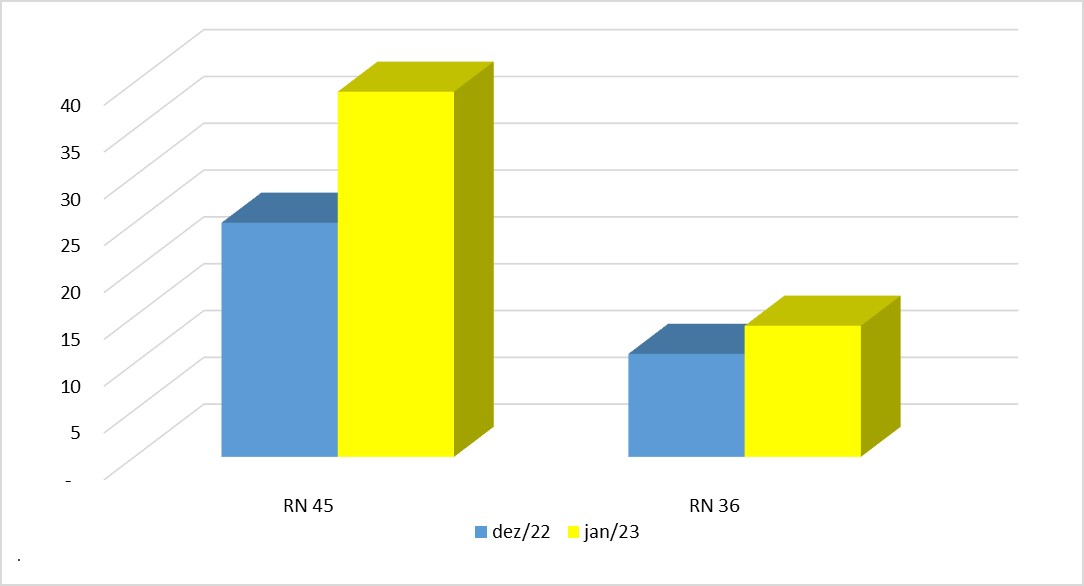
Source: OBMigra (December 2022 and January 2023), based on data from the General Coordination of Labor Immigration/Ministry of Justice and Public Security.
GRAPH 11
Number of permits granted to skilled workers, by month, sex, and type of permit, Brazil, December 2022 and January 2023.
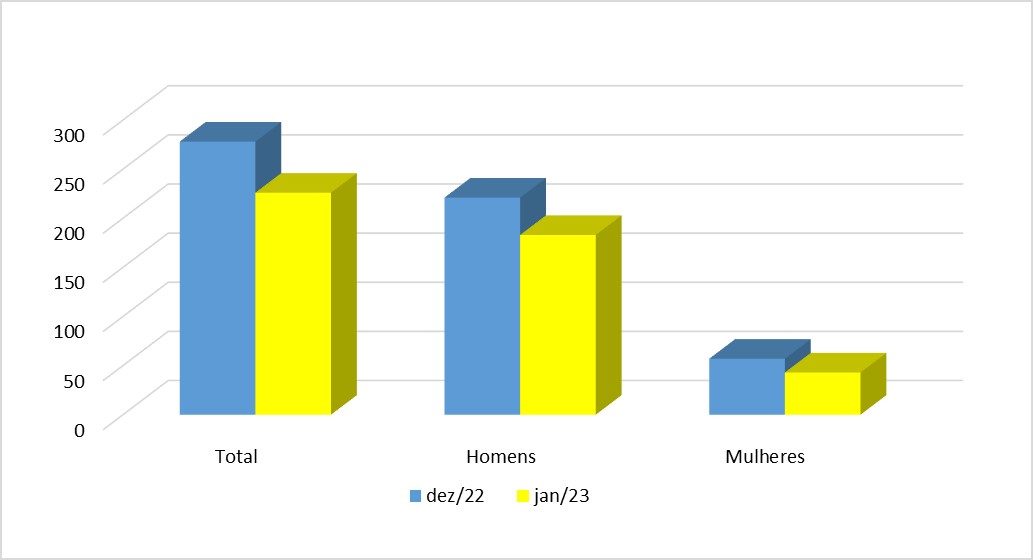
Source: OBMigra (December 2022 and January 2023), based on data from the General Coordination of Labor Immigration/Ministry of Justice and Public Security.
CTPS/RAIS/NOVO CAGED
Harmonized database Work and Social Security Card (CTPS)/Annual Report of Social Information (RAIS)/New General Register of Employed and Unemployed Persons (CAGED)
In December 2022, the movement of immigrant workers in the labor market was lower compared to November. Additionally, layoffs outnumbered new hires, resulting in a negative balance of job creation, mirroring the performance of December 2021 (Graph 12).
Among the key sectors of economic activity, the segments of commerce, administrative services, food and lodging, and building cleaning generated job opportunities for immigrant workers (Graph 13).
Although all major regions experienced a decline in the number of job openings for immigrant workers in the formal market in December 2022, the South Region remained the most active in terms of immigrant labor movement (Map 4).
.
GRAPH 12
Jobs created for immigrants in the formal labor market, by month - Brazil, 2019/2023
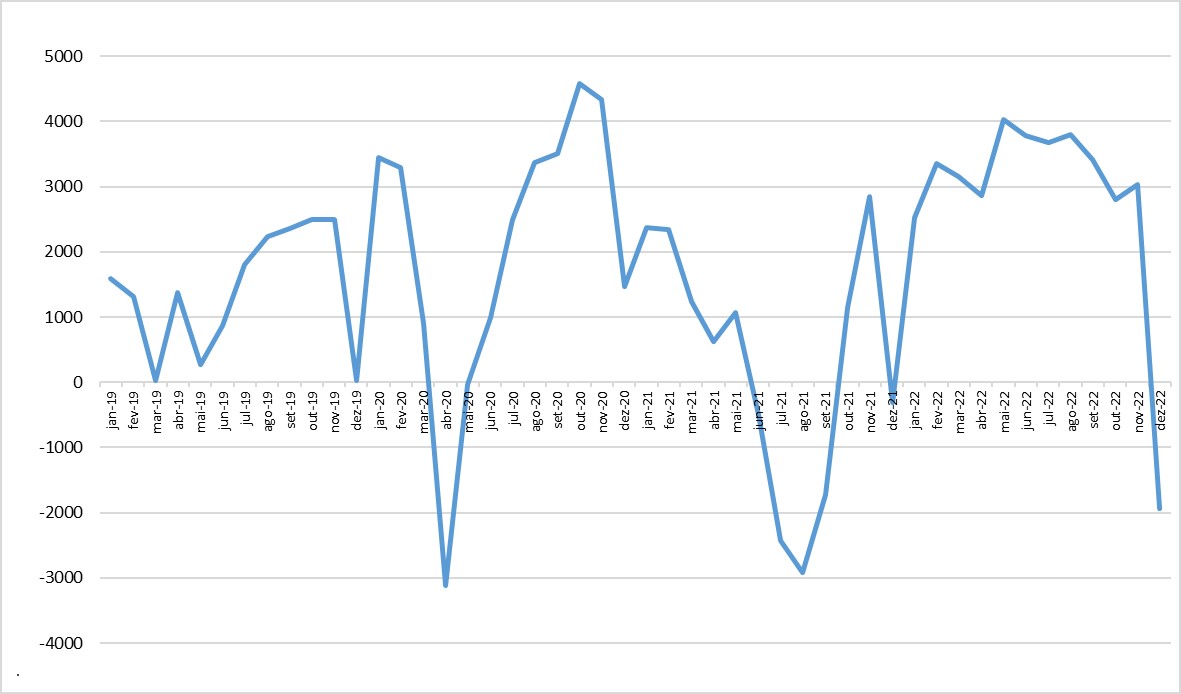
Source: OBMigra (2022), based on data from the harmonized database RAIS-CTPS-CAGED and the Digital System of Tax, Social Security and Labor Obligations (eSocial).
GRAPH 13
Job positions of migrant workers in the formal labor market, by main economic activities - Brazil, December 2022.
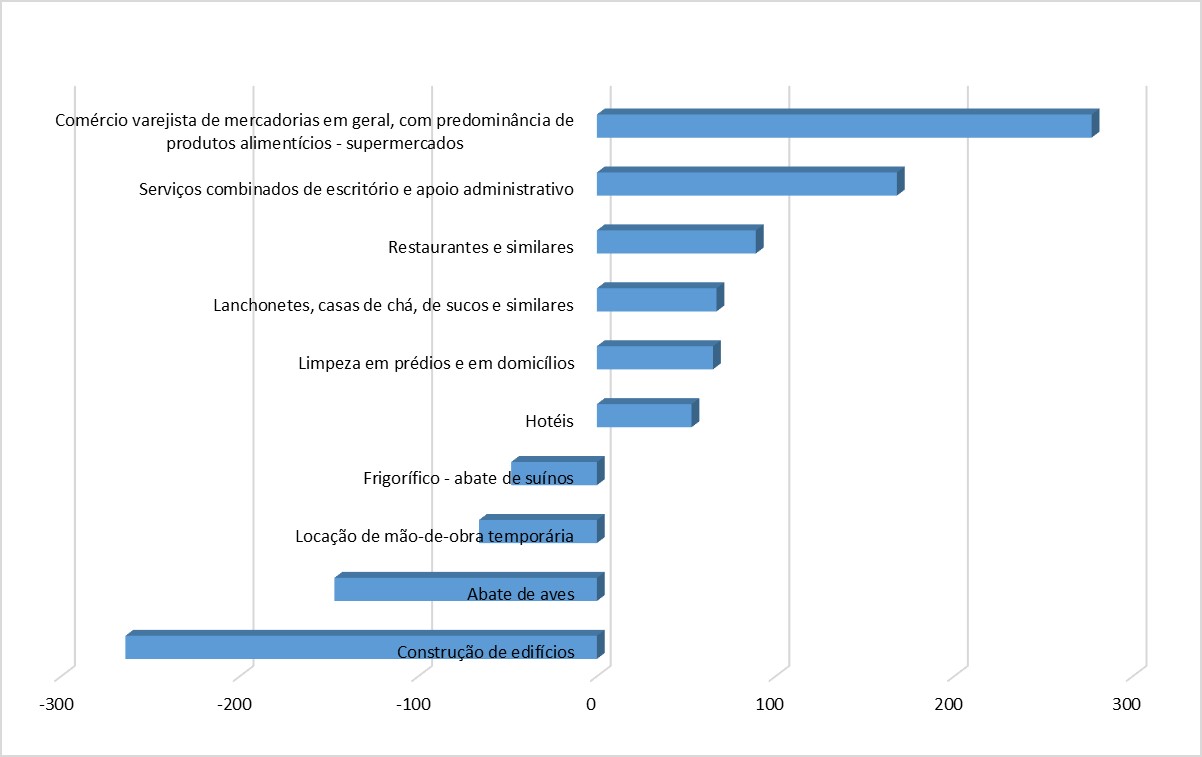
Source: OBMigra (December 2022), based on data from the Ministry of Economy, Harmonized database RAIS-CTPS-CAGED.
MAP 4
Hirings and layoffs of immigrant workers in the formal market, Brazil, December 2022.
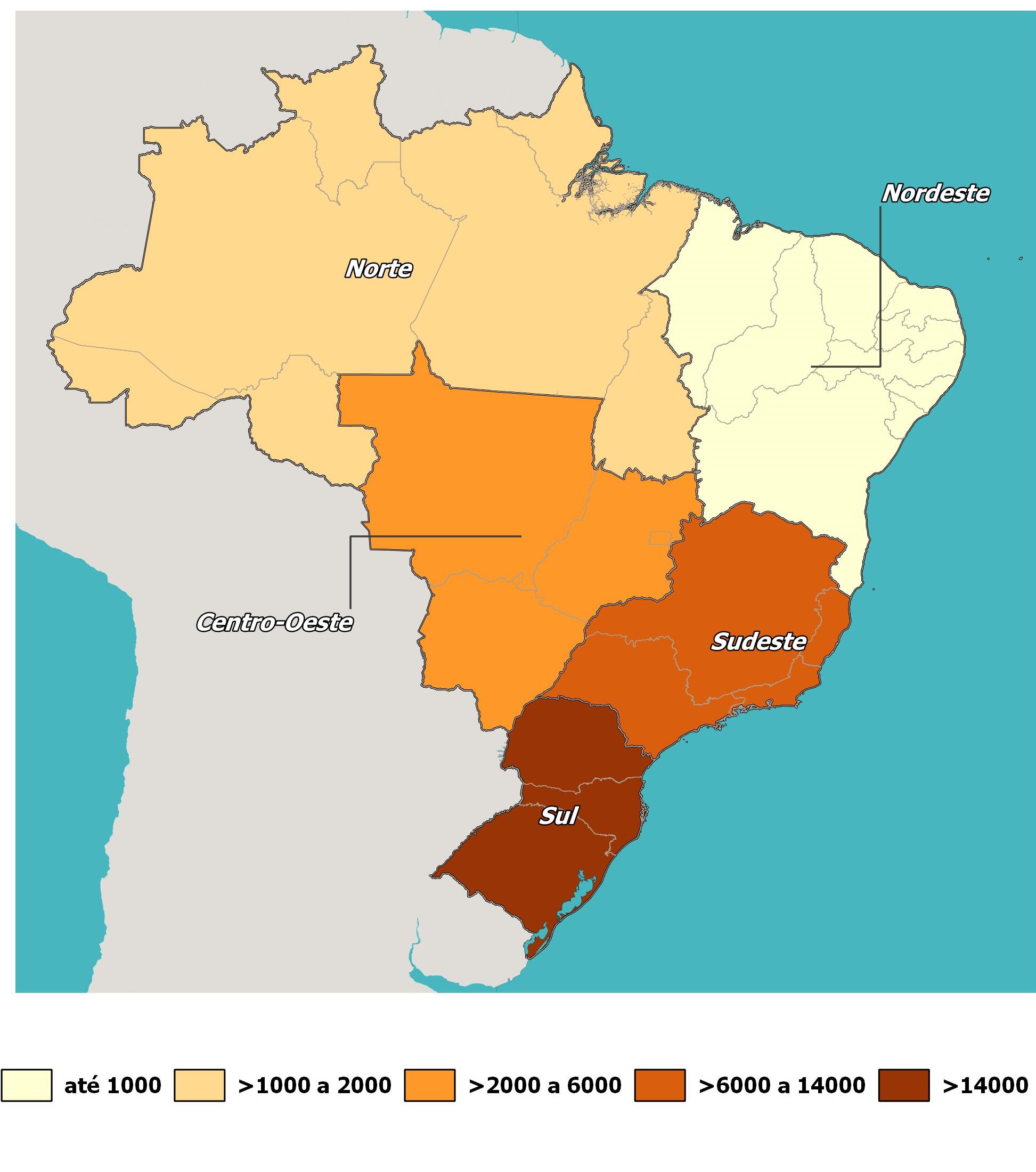
Source: OBMigra (December 2022), based on data from the Ministry of Economy, Harmonized database RAIS-CTPS-CAGED.
.
COMO CITAR
The reproduction of this text and the data contained therein is permitted, provided that proper citation of the source is included. Reproduction for commercial use is prohibited.
How to cite this text:
|
CAVALCANTI, L; OLIVEIRA, T; FURTADO, A; DICK, P; QUINTINO, F; SILVA, B. Acompanhamento de fluxo e empregabilidade dos imigrantes no Brasil: Relatório Mensal do OBMigra Ano 4, Número 1, janeiro de 2023/ Observatório das Migrações Internacionais; Brasília, DF: OBMigra, 2023. Available at: https://portaldeimigracao.mj.gov.br/pt/dados/relatorios-mensais
|

















